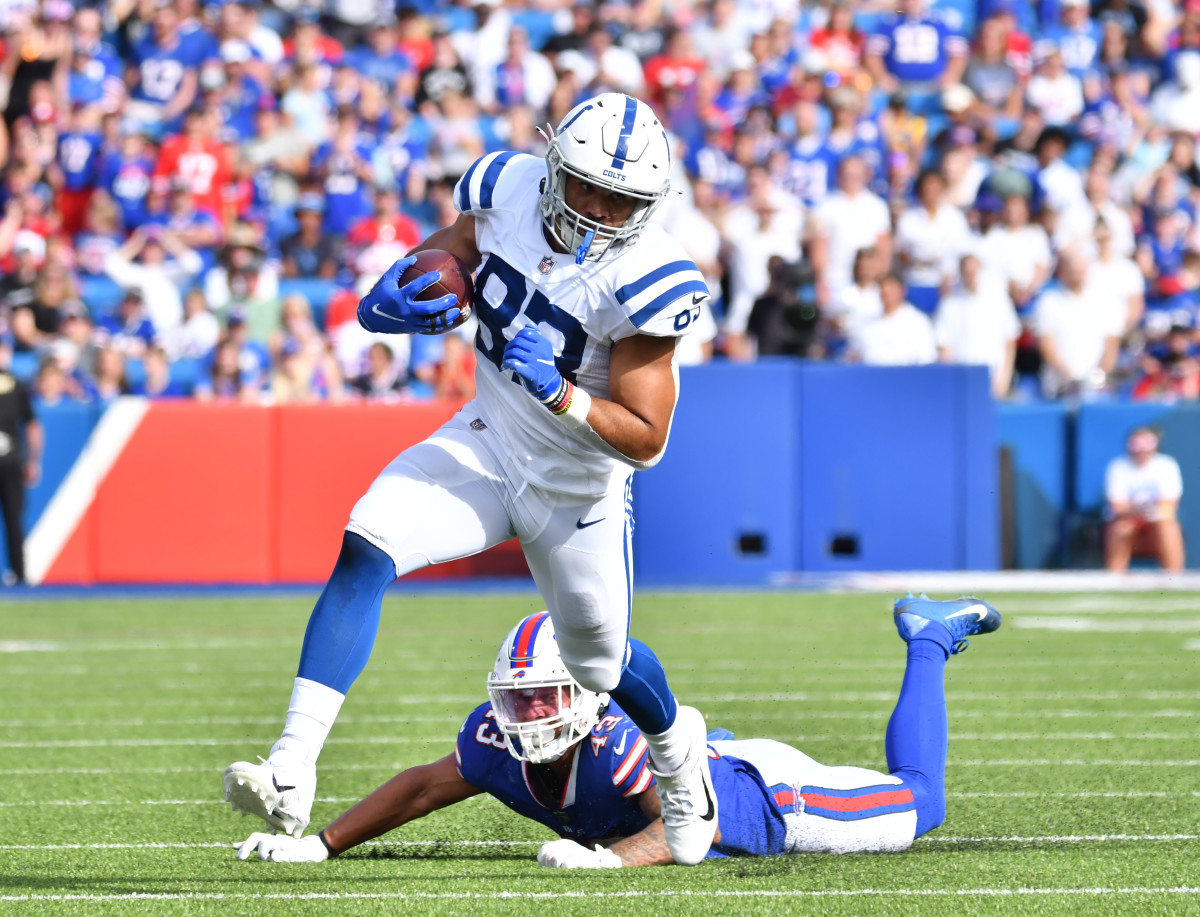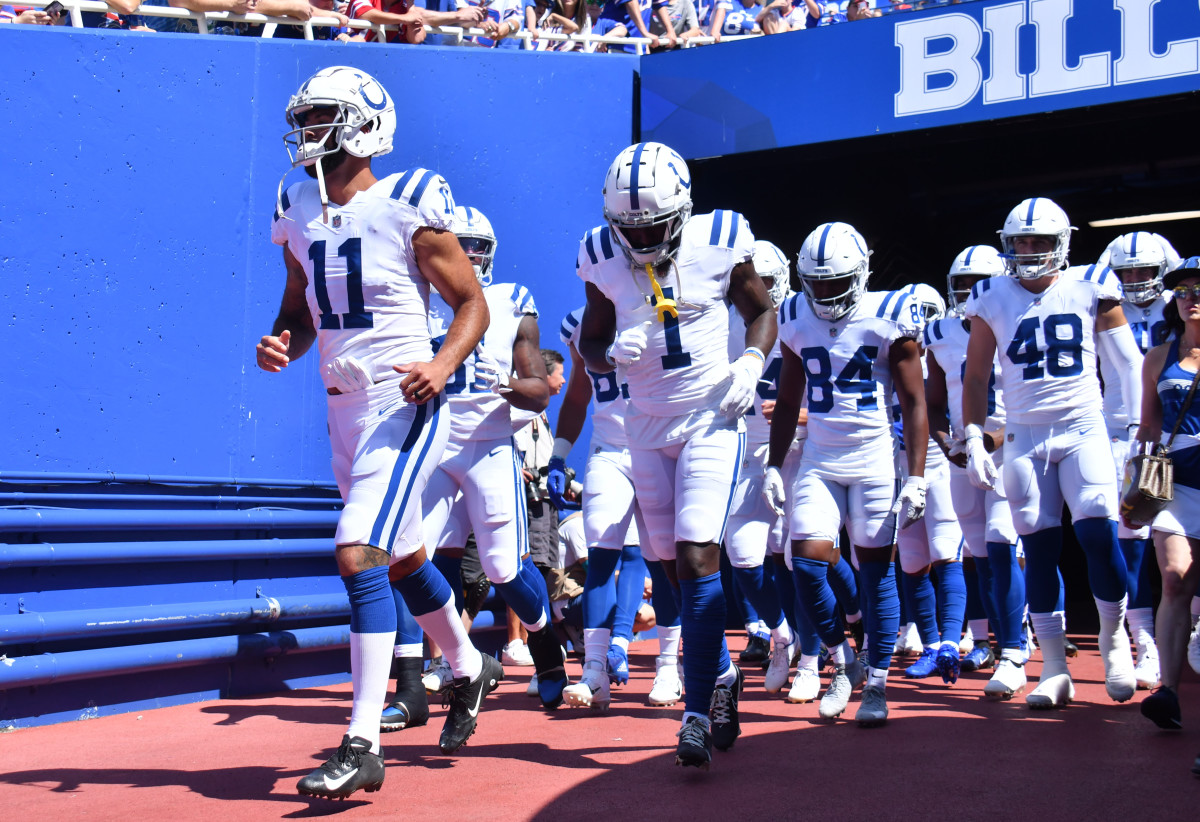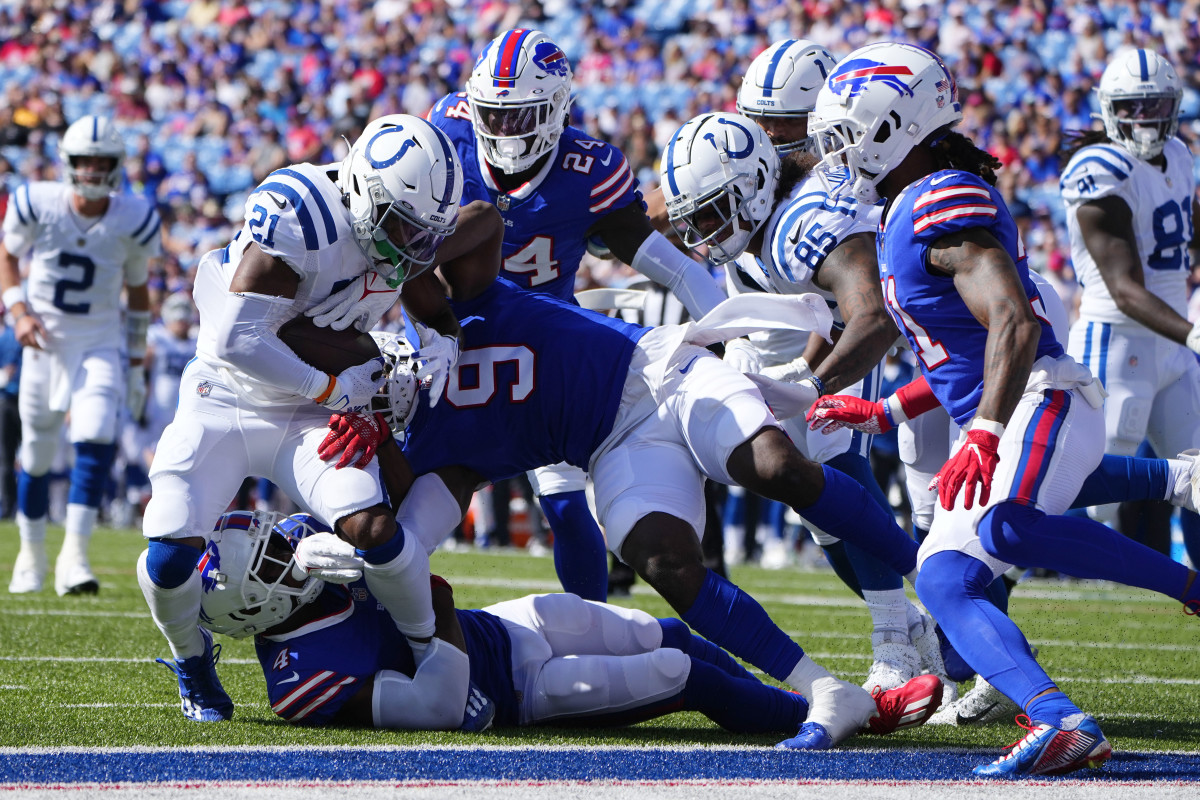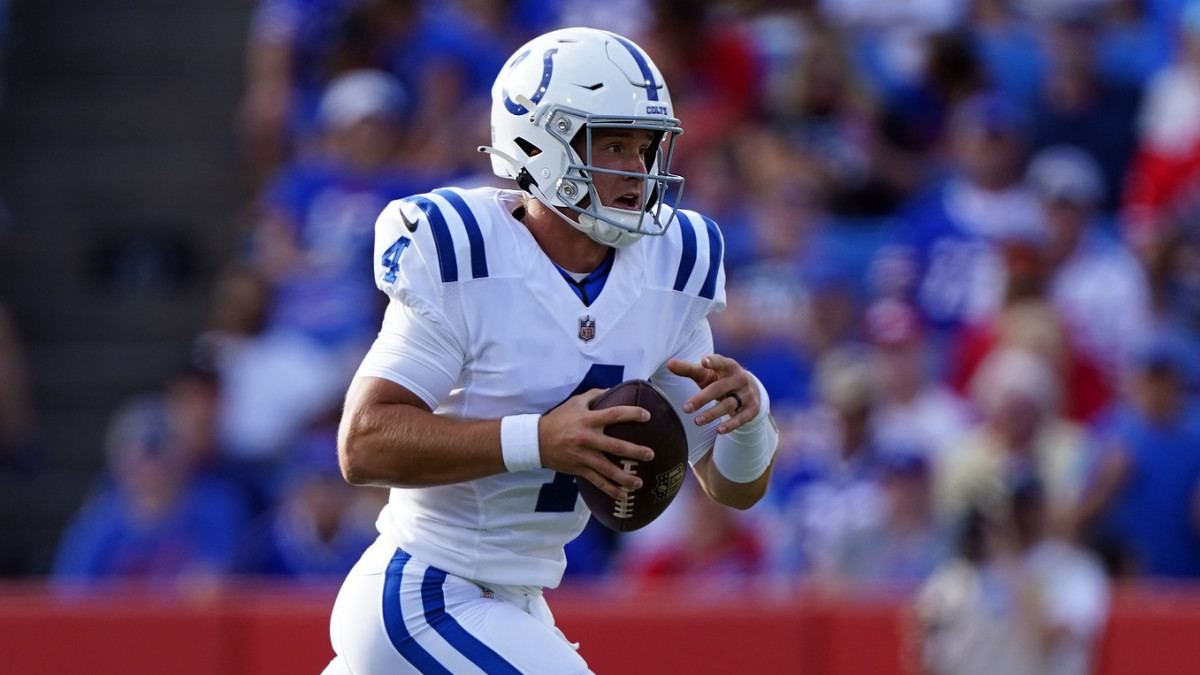How Colts Arranged, Attacked Offensively in First Preseason Game
While teams around the NFL used their first preseason game to evaluate depth, rest starters, and practice play-calling execution, the Indianapolis Colts chose to use roughly a third of Saturday’s 24-27 exhibition loss against the Buffalo Bills as a trial run with its new offensive personnel.
Sans running back Jonathan Taylor, the Colts rolled out an offense for 17 football minutes that looked somewhat like its projected Week 1 offense. It was certainly an elementary game as far as play-calling concepts, but we did get a look at all the new offensive talent projected to start for Indianapolis.
While the staff of head coach Frank Reich and offensive coordinator Marcus Brady remains intact, there are several question marks heading into the season on the offensive side of the football.
Matt Ryan is the fifth starting quarterback that Indianapolis has had in five years, second-round rookie Alec Pierce is slated to start at wide receiver, the tight end room gets revamped totally with the drafting of Jelani Woods and Drew Ogletree while losing the retired Jack Doyle, and Parris Campbell is yet again healthy to start a preseason. Add in that the Colts will likely have two new(ish) starters at left tackle and right guard, and the offense is nowhere near a sure thing.
I watched all 19 snaps (20 total formations) from Saturday’s game. I took note of the performance of all 11 players for every single play and found a few tidbits of note. Strap yourselves in for my thoughts on the starting offense for the Colts against the Bills.
Personnel

While Indianapolis’ clear offensive weak point may be the lack of star power in the passing game, its ability to use versatile personnel groupings should certainly not be understated.
Last season, Indianapolis was just above average in the NFL (14th) with 64% of its offensive snaps coming from 11 personnel (1 RB, 1 TE, 3 WR). This percentage held true against Buffalo as 13-of-20 (65%) offensive formations came from this personnel grouping. Campbell served as the slot receiver on all 13 plays, while Pierce and Michael Pittman Jr. took turns as to whether they lined up right or left. Mo Alie-Cox was the featured tight end on 10 out of 13 plays while Kylen Granson took the role on the other three.
Indianapolis did pull out the single-back jumbo (1 RB, 3 TE, 1 WR) set four times. The Colts ran two runs and one pass out of the set and false started on the fourth. The tight ends for this set were Alie-Cox, Granson, and Ogletree; Woods failed to see the field when the first-string offense had the football.
That leaves three more snaps for the offense, which they took in 12 personnel (1 RB, 2 TE, 2 WR). With the tight end corps looking incredibly versatile, and the team’s proclivity to run the ball and run play action, look for the Colts to use more 12 personnel in 2022 as the young tight ends develop. For now, all three attempts featured Alie-Cox. Two used Granson while Ogletree also had one snap in this formation.
New Weapon Usage

Just from the eye test, Pierce seemed to pass with flying colors in his first bout as a Colt. While only targeted twice, his first target was an expertly aimed comeback on the left side that showed some of what made him a great separator at Cincinnati. His other target was a contested ball that was won by an excellent defensive play, despite an accurate ball from Ryan. Pierce was on the field for every snap that required an outside receiver opposite Pittman. The Colts tested his route tree this game as he showed everything from slants and hitches to deep go routes and the solitary outside comeback. Solid first showing.
In his five offensive snaps, Ogletree was only active for one pass-catching snap, where he initiated a bump block as a potential dumpoff. Really he was only a blocking end for his time with the first-stringers but was solid in his role.
While not “new” per se, Campbell represents an “addition” to this offense and will play a role as the team’s primary slot receiver. Campbell only had one target on a crossing route that he dropped, but it seemed that Indianapolis preferred to use him as a downfield deep threat. He ran more go routes than any of Indianapolis’ three starting receivers and trickled in a deep comeback and one deep fade as well. It should also be noted that on 11 personnel run calls, Campbell was easily the most physical of Indianapolis’ wide receivers on run blocks.
O-Line: No Surprises?

The new-look offensive line was roughly what should’ve been expected from the Colts. We know that franchise stalwarts left guard Quenton Nelson and right tackle Braden Smith are studs and center Ryan Kelly is a great player. Those three players were exactly that: great.
Nelson showed he still is the nastiest run blocker in football, paving the way for Nyheim Hines several times. Smith was excellent in shoring up the right side of the offensive line in pass protection while Kelly had a rough game with a holding call and a few missed blocks on inside runs.
New right guard Danny Pinter seemed to do fine in pass protection for the most part but did at times seem a bit overwhelmed in the run game. Colts fans were hoping to expect the opposite from Pinter who showed flashes last year of great run blocking but weakness in the passing game.
The biggest issue on the offensive line from Saturday’s group was left tackle Matt Pryor. He wasn’t much of a difference-maker in the run game and he also gave up a sack after being overwhelmed by a speedy change of direction. While Pryor had good moments at left tackle last year, he wasn’t exactly the definition of consistent at the spot.
Bottom Line

Colts fans hope that this game was not an indication of what’s to come from the man currently slated to be Indianapolis’s Week 1 left tackle.
Indianapolis will return to preseason action as they take on the Detroit Lions (0-1) on Saturday at 1 p.m. EST.
Follow Chris on Twitter @ChrisYingling2.
